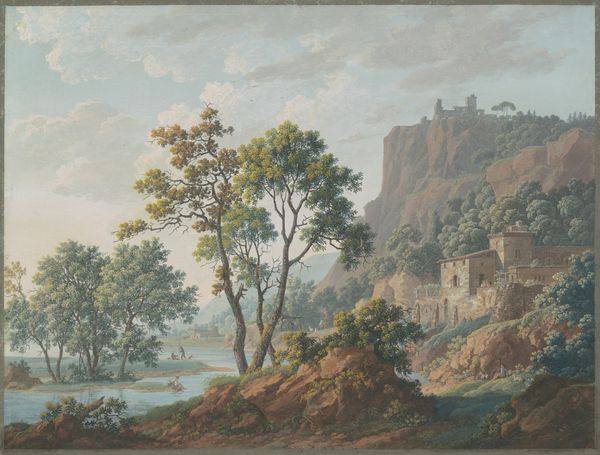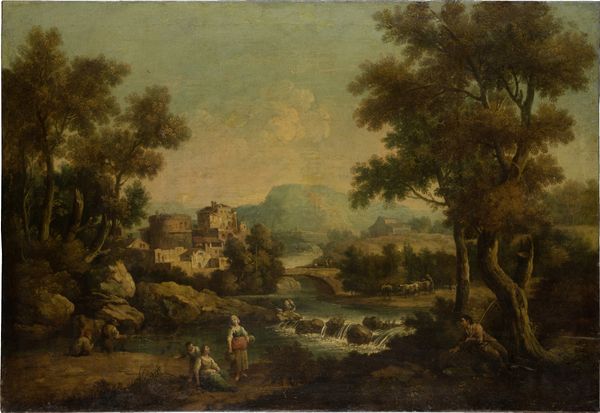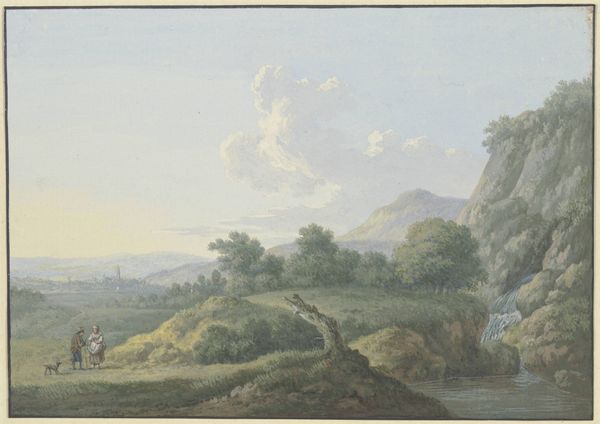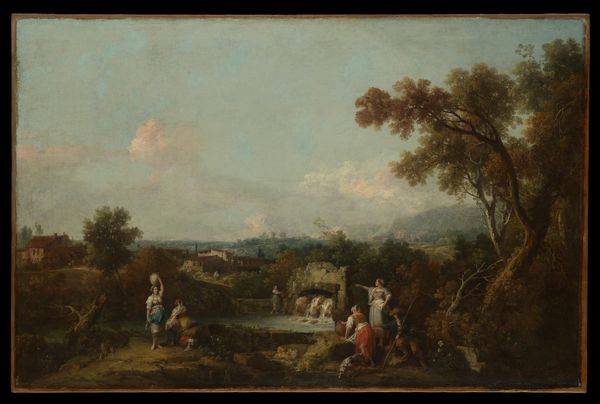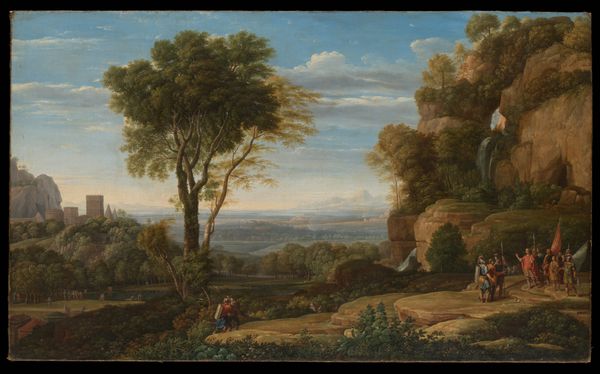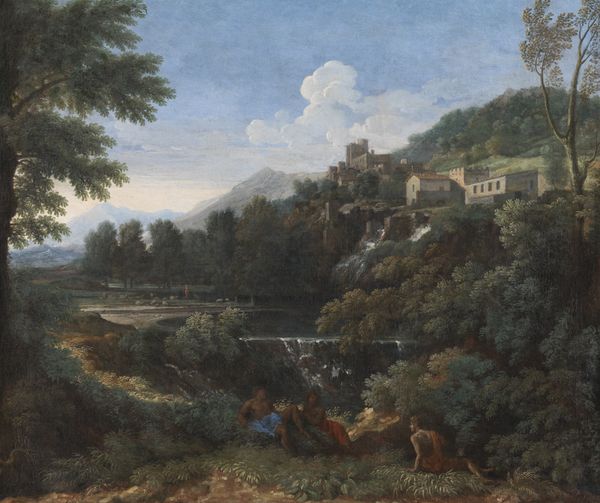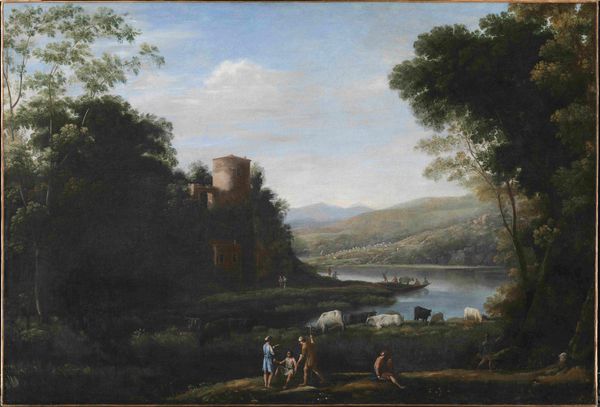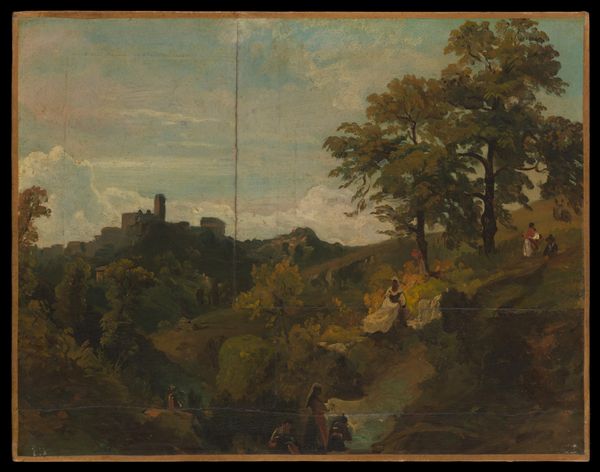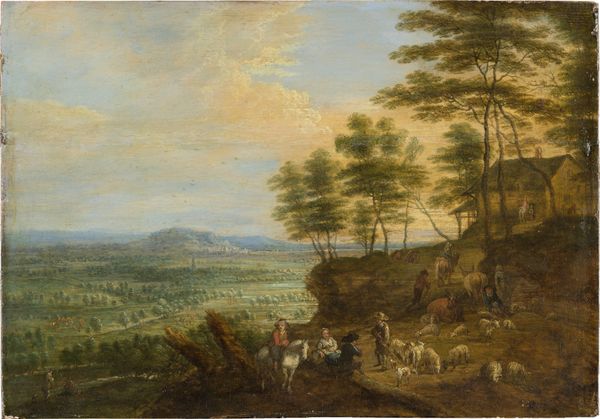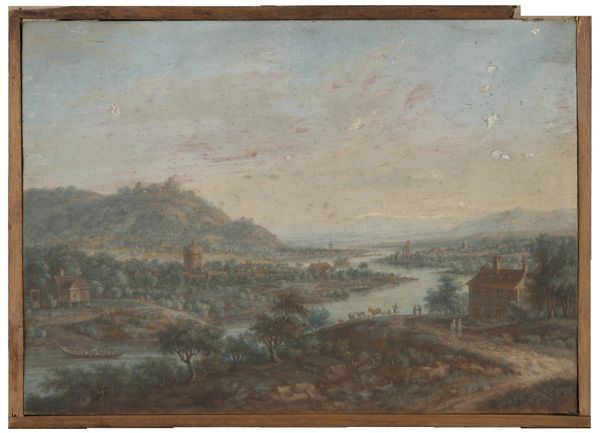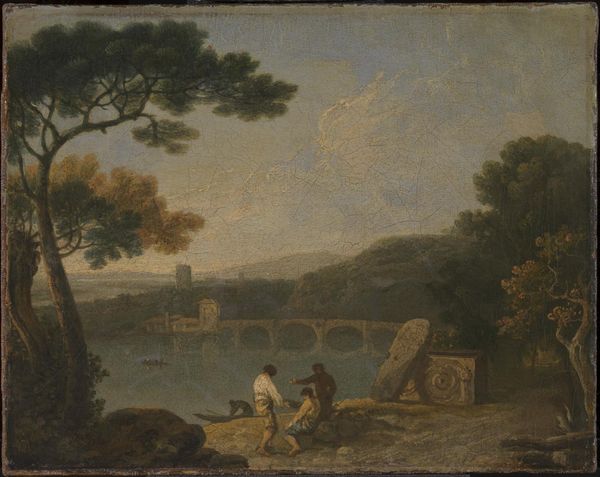
Lake Nemi and Genzano from the Terrace of the Capuchin Monastery 1756 - 1757
0:00
0:00
Dimensions: 16 7/8 x 21 1/8 in. (42.9 x 53.7 cm)
Copyright: Public Domain
Editor: Here we have Richard Wilson’s "Lake Nemi and Genzano from the Terrace of the Capuchin Monastery," painted between 1756 and 1757 using oil on canvas. The soft light gives everything a dreamy quality. I’m struck by how the figures seem small against such a grand landscape. What do you see in this piece? Art Historian: Indeed, it's a serene and classical landscape. The artist uses compositional elements that recall ideal and idyllic scenes of the past, while still embracing his contemporary society through the subtle portrayal of working-class citizens of the day. Note the strategically placed figures in robes, resembling shepherds or ancient philosophers perhaps – figures of quiet contemplation and timelessness, and next to them ordinary people carrying out quotidian chores. Wilson carefully places these figures against the backdrop of cultivated nature. The contrast isn't accidental. What does this combination tell you about the landscape's significance? Editor: I guess it’s not just about pretty scenery, but more about humanity’s place in the natural world. The architecture and the cultivated trees tell that. Almost like taming a force? Art Historian: Precisely! The landscape, here, acts as a repository of cultural memory. See how Wilson evokes classical ideals of beauty and tranquility. However, he juxtaposes these ideals with contemporary figures, hinting at humanity's ongoing dialogue with its surroundings, of its attempts to domesticate. The monastery and the town signify settlements of the population throughout the ages. What is nature telling them here? Is it wild or is it subdued? Editor: This makes me consider nature and our perception of it so much more! Before, I simply appreciated it on the surface level as just an artform. Art Historian: Exactly, now you can remember what else might exist underneath, just behind what's displayed! This painting becomes an invitation to consider how we shape, and are shaped by, the world around us, and our presence that changes it every minute. Editor: This piece is much deeper than I initially realized, a whole cultural imprint is embedded into the scene! Thank you!
Comments
No comments
Be the first to comment and join the conversation on the ultimate creative platform.
